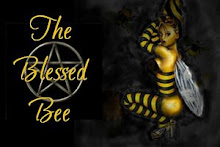The origin of the word Dragon is from the Greek Drakoni, which means "the seeing one". Thus Dragons are associated with the ability to see or perceive phenomenon, particularly above and beyond the normal range of perception open to mere mortals. Thus they represent the unknown within each of us and within each of our lives.
Often symbols of greed or lust, Dragons can represent unresolved personality conflicts within our psyche. They can represent the dark side of our souls. Like the far side of the Moon, our souls aren't dark because they are evil, but because they are challenging us to explore, become illuminated and achieve a fuller understanding of our lives and destinies.
In astrology, the symbol of the Dragon is extremely important in a natal chart. The Dragon's Head or North Node, as it is known, represents the karmic equation of this lifetime, the sets of lessons which we as spirit beings have each elected to come down here to earth again to learn. The Dragon's Head is not a planet or a fixed star, but a mathematical point formed by the intersection of the Moon's orbit across the apparent path of the Sun through the zodiac. The Dragon's Tail or Southerly point of intersection represents the baggage we bring with us from previous incarnations.
The Dragon constellation lies immediately above the North Pole. Due to precession of the equinoxes, the most northerly point has shifted from Alpha Draconis, which was the pole star at the time of the building of the Great Pyramid at Cheops, and is now Gamma Draconis. The pyramids were built to bring down cosmic energy from this constellation, and radiate the energy across the earthly dimension.
The shifting of the zodiac signs and the shifting of the constellation Draconis synchronize with evolutionary changes in the spiritual direction and level of humanity. Thus the Dragon represents our evolutionary path as beings, with as many twists and turns in our history as we can see in the body of the Dragon itself.
In Greek mythology, Hercules overcame the Hydra, the monster with nine heads. Jason and his argonauts overcame the Dragon of Colchis to be able to steal the Golden Fleece. In Norse mythology, Thor slew the Great Dragon whose body stretched around the world, striking the beast upon its head with his war hammer. Siegfried slew Fafnir the Dragon in The Ring of the Nibelungs, an opera composed by Wagner, who drew on his source from ancient Teutonic and Icelandic legends.
The Christians adopted the symbol of the Dragon as a symbol of evil, sometimes representing the Pope, sometimes Martin Luther, depending on inclination, but always as a symbol of 'the other side' which they feared and did not understand. The Vikings adopted the Dragon as their symbol, carving a Dragon's head onto the bow of their ships.
In many legends Dragons are represented as robbers and abductors of women. In Greek mythology, it is Perseus who rescues Andromeda from being chained to the rock. In many other folk tales, it is the Dragon which steals light, water, or some other element. On the other hand, Dragons have also long been regarded as guardians and custodians. In the Mesopotamian Epic of Gilgamesh, we have the Great Serpent which lies coiled at the base of the Tree of Life.
In the ancient school of mysticism known as the Qabbala, we come across pictures in which the Great Serpent coils around the Tree of Life, a glyph in which the planets, zodiac signs, and Major Arcana are laid out as a map through which the Path to Enlightenment is shown. In this system, the Serpent is a symbol of Wisdom. As it moves through the branches of this Great Tree and crosses over each of the paths, it shows us how we may bring about our own spiritual evolution. Initially, its movement through the Tree causes us to confront our own psychological weak spots or blind spots. When we have reconciled those contradictions, we then follow its upward movement and thus balance our spiritual energies on a higher plane. We continue our ascent by being aligned with the mighy creative powers of the universe.
The Dragon is there to tease us, to provoke us, to stimulate us to a higher plane of being, to force us to look within. Above all, the Dragon is a symbol of our need for mystery and magic in a modern world.
The Year 2000, the first year in the next millennia, is the Year of the Dragon. This is deeply symbolic, because we as a race of beings will be very much at a crossroads in terms of our evolution as a species. Are we going to continue in our same ways, collectively or individually? Or are we going to take a quantum leap of faith and consciousness which the Dragon, standing at the corner of this point in human history, is there to suggest we take?
Red Rover App
14 years ago










0 comments:
Post a Comment